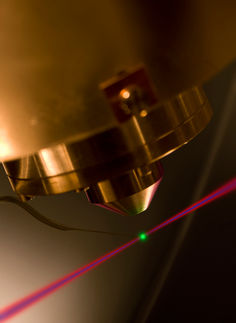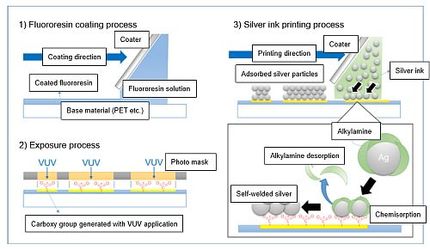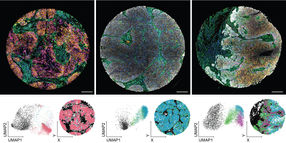NYU researchers create method to precisely glue particles together on the micro- and nano-scale
Researchers at New York University have created a method to precisely bind nano- and micrometer-sized particles together into larger-scale structures with useful materials properties. Their work, which appears in the latest issue of the journal Nature Materials, overcomes the problem of uncontrollable sticking, which had been a barrier to the successful creation of stable microscopic and macroscopic structures with a sophisticated architecture.
The long-term goal of the NYU researchers is to create non-biological materials that have the ability to self-replicate. In the process of self-replication, the number of objects doubles every cycle. This exponential growth stands in sharp contrast to conventional materials production, where doubling the amount of product requires twice the production time. At present, this linear scaling poses a major stumbling block for the fabrication of useful quantities of microscopic objects with a sophisticated architecture, which are needed for the next stages of micro- and nanotechnology.
In order to obtain self-replication, the researchers coat micrometer-sized particles with short stretches of DNA, so-called "sticky ends". Each sticky end consists of a particular sequence of DNA building blocks and sticky ends with complementary sequences form very specific bonds that are reversible. Below a certain temperature, the particles recognize each other and bind together, while they unbind again above that temperature. This enables a scheme in which the particles spontaneously organize into an exact copy on top of a template, which can then be released by elevating the temperature.
Scientists have used DNA-mediated interactions before, but it has always been very difficult to bind only a subset of particles - usually, either all particles or no particles are bound. This makes it challenging to make well-defined structures. Therefore, the NYU team, comprised of researchers in the Physics Department's Center for Soft Matter Research and in the university's Department of Chemistry, sought to find a method to better control the interactions and organization of the particles.
To do so, the researchers took advantage of the ability of certain DNA sequences to fold into a hairpin-like structure or to bind to neighboring sticky ends on the same particle. They found that if they lowered the temperature very rapidly, these sticky ends fold up on the particle - before they can bind to sticky ends on other particles. The particles stuck only when they were held together for several minutes - a sufficient period for the sticky ends to find a binding partner on another particle.
"We can finely tune and even switch off the attractions between particles, rendering them inert unless they are heated or held together - like a nano-contact glue," said Mirjam Leunissen, a post-doctoral fellow in the Center for Soft Matter Research and the study's lead author.
To maneuver the particles, the team used optical traps, or tweezers. This tool, created by David Grier, chair of NYU's Department of Physics and one of the paper's authors, uses laser beams to move objects as small as a few nanometers, or one-billionth of a meter.
The work has a range of possible applications. Notably, because the size of micrometer-scale particles is comparable to the wavelength of visible light, ordered arrays of these particles can be used for optical devices. These include sensors and photonic crystals that can switch light analogous to the way semi-conductors switch electrical currents. Moreover, the same organizational principles apply to smaller nanoparticles, which possess a wide range of electrical, optical, and magnetic properties that are useful for applications.
Most read news
Other news from the department science

Get the analytics and lab tech industry in your inbox
From now on, don't miss a thing: Our newsletter for analytics and lab technology brings you up to date every Tuesday. The latest industry news, product highlights and innovations - compact and easy to understand in your inbox. Researched by us so you don't have to.


























































